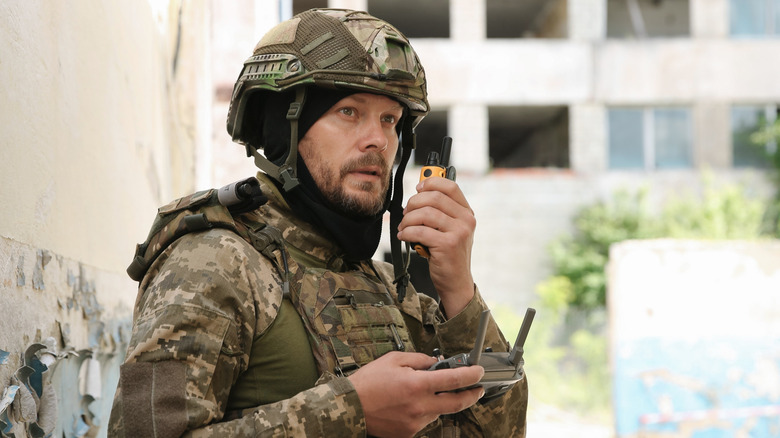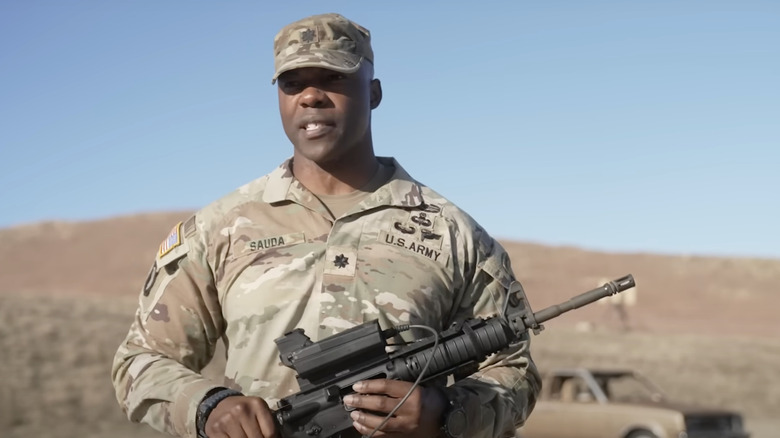How Does The US Military Deal With Drones On The Battlefield?
Drones, or Unmanned Aerial Systems (UAS) — as the U.S. Department of Defense calls them — have been literally on the military's radar for quite a while. The United States and England developed and tested drones during World War I, although those devices weren't deemed battle-ready. Now that drone technology has evolved, many nations have beefed up their use of UAS in combat zones. Some of the high tech tools used in the Ukraine War and Gaza are smaller commercially-available drones, like the newly upgraded DJI Air 3S. Their global availability, low price, and ability to carry dangerous payloads has made them a force to be reckoned with. As drones have changed the fundamentals of modern warfare in recent years, there's been a corresponding evolution in the tactics and training required to neutralize them.
Col. Moseph Sauda told the Wall Street Journal, "The pace of the need is outgrowing capacity right now, so we're trying to train as many people as possible and trying to grow as fast as possible to fit that need." With this in mind, the U.S. military has created a specialized drone warfare school out of Fort Sill, Oklahoma. It's formally known as the Joint Counter-small Unmanned Aerial Systems (C-sUAS) University, and abbreviated as JCU.
It's the first academy of its kind, where troops from all branches will learn the necessary skills to detect and repel small off-the-shelf UAS targets. The JCU aims to train about 1,000 troops a year to tackle both individual drones and drone swarms using a variety of systems.
JCU uses some familiar and not-so familiar weapon systems
America currently fights off Russian drones with the Vehicle-Agnostic Modular Palletized ISR Rocket Equipment (VAMPIRE) system from L3Harris, which uses rockets. Before the JCU was formed, anti-drone training techniques were fragmented, with each branch creating their own methods using various weapons systems. The JCU's goal is to centralize that training and create a standard regime not just for the U.S. military, but also for federal agencies and allied nations. It combines theory and live exercises, creating a comprehensive understanding of how to combat this growing threat. The various courses involved can be anywhere from one to three weeks long.
One of the weapons students train to use is known as the "Smart Shooter." It's an optical system that attaches to a standard M4 rifle, enabling soldiers to more accurately target small objects in close proximity. The rifle fires a 5.56 x 45 millimeter round, which is enough to take out most consumer-grade drones. However, JCU students don't shoot at drones directly. Instead, they shoot at balloons attached to the drones. The balloons are much cheaper than mock enemy drones, and the winds that swirl around Fort Sill make them harder targets to hit.
In addition to the Smart Shooter, JCU students also train with the Dronebuster. It's another handheld device, but instead of firing bullets, it sends electronic pulses that disable its target. Although some larger drones military drones are built with anti-jamming technology, that's not as much of a concern with off-the-shelf models.

